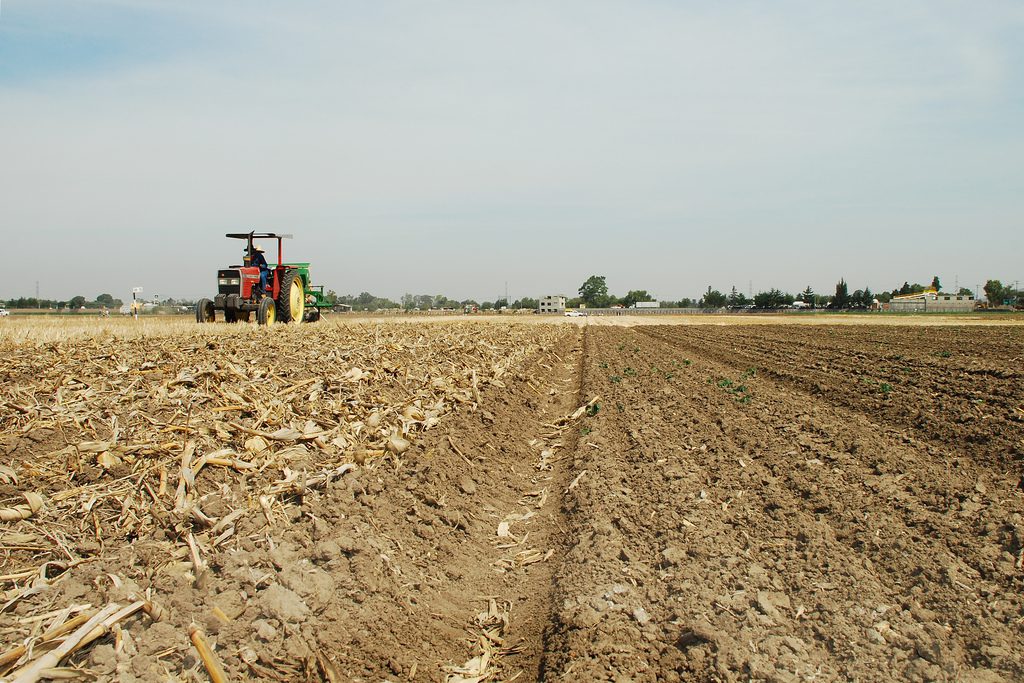Conservation tillage in Ontario

Tillage is the process by which farmers prepare their fields for seeding by digging, turning, or otherwise disturbing the top layer of soil. Usually, farmers till the land to bury residue and nutrients left in the top layer of soil from a previous crop in their rotation, to reduce soil compaction, to incorporate manure or fertilizer, or to help control weeds. It has traditionally been an important practice for farmers around the world.
In recent years, though, conservation tillage (or zero tillage, or no-till) has become an increasingly popular way for farmers to reduce their environmental impact. By tilling less, or not tilling at all in fields that can handle it, farmers can reduce their impact on the soil structure, reduce the potential for top layer erosion, and reduce soil compaction (the fewer times a heavy piece of farm equipment runs over a parcel of land, the better–especially when it comes to heavy planters and grain bins). The biggest benefit to farmers who practice conservation tillage is cost savings: labour, equipment, and most of all, fuel costs can be drastically reduced by implementing a conservation tillage strategy.
The downsides of reducing tillage can be significant: not only is there a risk of carrying over plant diseases or pests from previous crops (they’ll remain right at the surface without tillage), but it’s very difficult to control weeds without mechanical tillage. Modern conservation tillage practices are only possible because of advances in biotechnology: GM crops that are resistant to herbicides.
Because the potential cost and environmental savings are so enticing, grain farmers are very interested in furthering research in no-till practices in Ontario; especially new alternatives to mechanical weed control. One thing is for certain: conservation tillage is here to stay.
